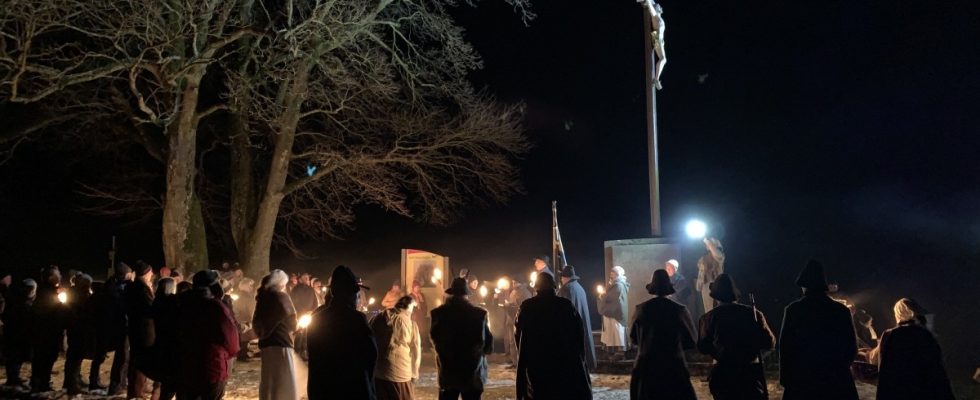As the tractors of the demonstrating farmers rolled home like a column of army vehicles on Monday evening, a torchlight procession set in motion on the market square in Aidenbach (Passau district), which was also reminiscent of a farmers’ revolt. The only difference was that it was more dramatic than the current rallies; after all, thousands were killed. More than 300 years have passed since then, but the people of Aidenbach are still touched to their core by the slaughter. That’s why every year on January 8th they march up to the Handlberg battle memorial to commemorate the events of 1706.
Two existential events were linked on Monday, even if they were far apart in time. The farmers often defended their land in times of need and risked their lives to do so. Something like this shapes the collective memory for generations. Anyone entering this profession should know this. Bavaria is no longer purely a farming country, but its heritage is as structured as farming as ever.
After the Wars of Succession, Bavaria began a ten-year period of occupation during which the Austrians harassed the people to such an extent that the farmers dared to revolt in 1706. “Better to die like a Bavarian than to perish like an emperor,” shouted their leaders.
During the torchlight procession on Monday, the pain from back then could literally be felt. Firecracker shots marked the thunder of the cannons, as well as the sound of church bells and the screams of the men of the festival club, who performed short scenes on the way to Handlberg. Every two years in July the battle of 1706 is reenacted in Aidenbach. This drama is only funny in one place, namely when the actors complain around the campfire on the warm summer night: “Mei, but hey eats koid!”
It was actually freezing cold that Monday. The snowy wind blew over the hill as Mayor Robert Grabler remembered the slaughter in Aidenbach, but also today’s wartime hardships.
Thousands of dead farmers and soldiers lay in the fields around Aidenbach in 1706. Their remains still come to light during plowing. The participants in the torchlight procession were all the happier when they were able to warm up in the inn afterwards. Only one boy, holding his mother’s hand, was still having serious thoughts: “What if the Austrians attack us again?”

